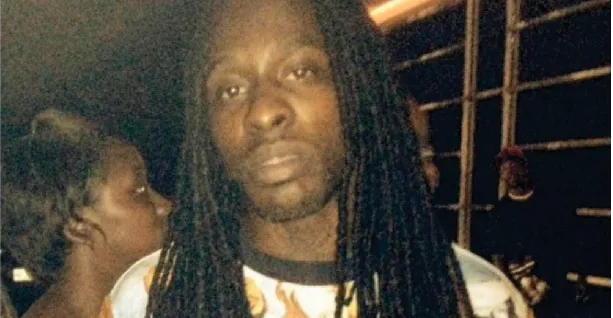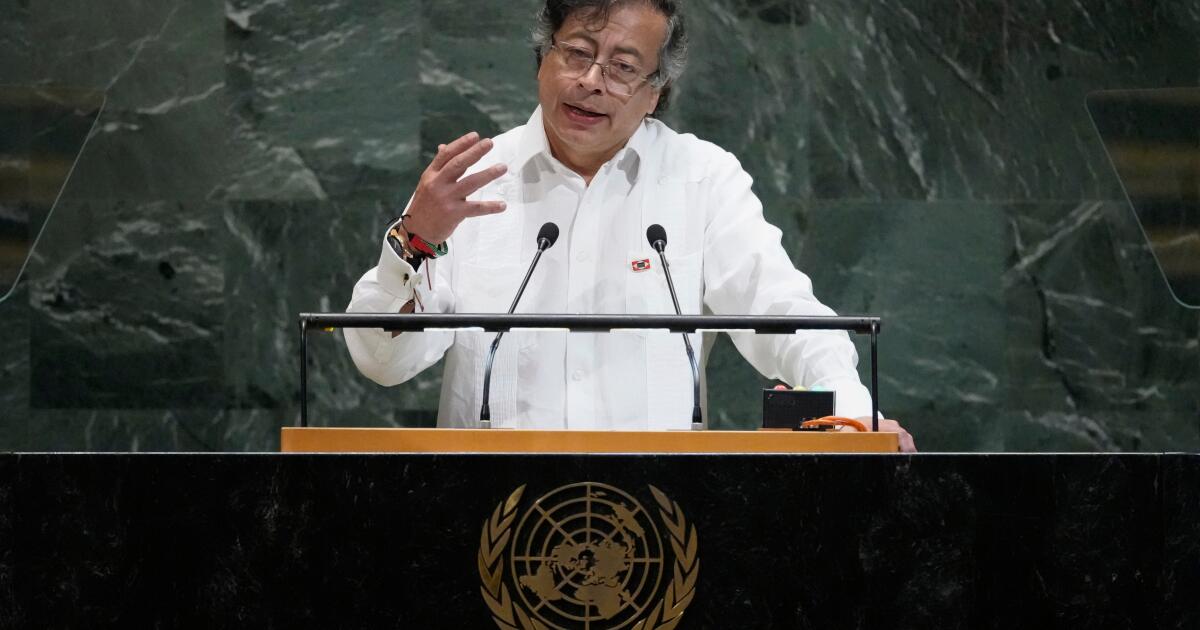Copyright Vox.com

Damon Landor suffered one of the most blatant and obvious violations of his religious liberty imaginable. Landor is Rastafarian and, as part of his religious devotion, does not cut his hair. According to his lawyers, he kept this vow for more than two decades, and his hair grew long enough to fall “nearly to his knees.” Then, while he was serving a five-month prison sentence for a drug-related crime in 2020, prison officials handcuffed him to a chair, held him down, and shaved his head. SCOTUS, Explained Get the latest developments on the US Supreme Court from senior correspondent Ian Millhiser. Email (required) By submitting your email, you agree to our Terms and Privacy Notice. This site is protected by reCAPTCHA and the Google Privacy Policy and Terms of Service apply. The most remarkable thing about Landor’s case is, when Landor was transferred to the prison facility where he was shaved, he brought with him a copy of a federal appeals court’s decision in Ware v. Louisiana Department of Corrections (2017), which held that Louisiana’s policy of cutting the hair of Rastafarian prisoners violates a federal religious liberty law. Yet, despite the fact that Landor showed this decision to prison officials, they shaved his head anyway. Given these facts, it sure seems like Landor v. Louisiana Department of Corrections should be a slam-dunk case for the plaintiff. At the time that he was shaved, there was a federal court decision clearly establishing that Louisiana may not shave Rastafarian inmates who share Landor’s belief that they should grow their hair long. And the prison officials who shaved him were clearly aware of that decision because Landor brought a copy of the case with him to prison. But his case, sadly, is far more complicated than it should be, for two reasons. One is that Landor is suing several of the prison officials responsible for shaving him, including the prison warden and several guards — claiming that they personally owe him for violating his legal rights. This Supreme Court is often hostile to plaintiffs who seek money damages from individual law enforcement officers, although a 2020 Supreme Court decision suggests that they are less so in cases involving religious liberty. The other needless difficulty of Landor’s case stems from a fight over judicial supremacy that consumed pretty much the entire 1990s. In Employment Division v. Smith (1990), the Supreme Court drastically limited the scope of the Constitution’s provision protecting the free exercise of religion. Congress then enacted a law seeking to undo Smith, but the Supreme Court nullified much of that law in City of Boerne v. Flores (1997). Landor sued prison officials under the Religious Land Use and Institutionalized Persons Act of 2000 (RLUIPA), which sought to restore some of the religious liberties denied by the Court in City of Boerne. The Landor case turns on whether Congress was actually allowed to do that: to restore the right to sue individual government officials who violate religious liberty, which existed prior to Smith. It is likely that the Supreme Court will side with Landor. The current crop of justices tends to be hyperprotective of religious rights, especially when the rights of conservative Christians are involved. But this concern about religious liberty sometimes spills over to benefit people of other faiths. In Holt v. Hobbs (2015), for example, a unanimous Court sided with a Muslim inmate who wished to grow a beard while incarcerated. Nevertheless, even if the Court is inclined to support Landor, it will have to untangle a web of arcane precedents to do so. A brief history of how US religious liberty law became so muddled To fully understand Landor, we have to go back to the 1960s. In Sherbert v. Verner (1963), the Supreme Court ruled in favor of a worker who was denied unemployment benefits after he refused to work on Saturdays for religious reasons, even though the state provided benefits to Sunday sabbatarians in similar circumstances. Sherbert established that the Constitution sometimes allows people of faith to seek exemptions from state and federal laws that conflict with their religious beliefs. The Smith decision effectively overruled Sherbert, holding that the “right of free exercise does not relieve an individual of the obligation to comply with a ‘valid and neutral law of general applicability on the ground that the law proscribes (or prescribes) conduct that his religion prescribes (or proscribes).’” Thus, Smith meant that so long as a law applies evenhandedly to people of all faiths (and to people of no faith), all people must comply with that law. But the politics of religious liberty have scrambled considerably since Smith was decided in 1990. Smith was authored by Justice Antonin Scalia, a Reagan appointee and conservative icon. But Republicans have since embraced a very broad interpretation of Sherbert that allows religious conservatives to defy state or federal laws that conflict with their own religious beliefs — such as laws prohibiting discrimination against LGBTQ people, or laws requiring employee health plans to cover contraception. Democratic justices, meanwhile, have generally argued that religious liberty should not be understood to “detrimentally affect others who do not share” a particular plaintiff’s belief. Thus, for example, an employer who objects to birth control on religious grounds should not be able to cut off their employee’s access to contraception. But this partisan dispute is not really present in the Landor case, because it’s hard to see how Damon Landor’s dreadlocks impacted anyone other than himself. And there’s a broad political consensus that, when someone exercises their faith in a way that does not harm others, they should be allowed to do so. Thus, Congress attempted to overturn Smith when it enacted the Religious Freedom Restoration Act of 1993, a law that was unanimously passed by the House and was passed by the Senate in a 97-3 vote. Had RFRA taken full effect, it would have restored the same rule the Supreme Court first established in the 1960s in Sherbert. But City of Boerne effectively abolished half of RFRA. As originally enacted, RFRA would have restored pre-Smith religious liberty and required both state and federal governments to grant legal exemptions to religious believers who were entitled to them under Sherbert. City of Boerne, however, held that Congress could not require states to comply with pre-Smith law. (Congress may require the federal government to comply with virtually any rule it chooses.) While the legal standard announced in City of Boerne is vague and difficult to explain concisely, the decision is best understood as a statement of judicial supremacy. The Supreme Court had concluded, in Smith, that the Constitution gives only narrow protection to religious liberty. And the Supreme Court wasn’t going to let Congress overrule it on a question of constitutional interpretation. The statute at issue in the Landor case, RLUIPA, was Congress’s response to City of Boerne. Rather than imposing a blanket rule that all state officials in every state must comply with Sherbert, RLUIPA took a more targeted approach. The provision of RLUIPA at the heart of Landor requires state prisons that receive federal funding to accommodate prisoners who object to a law or prison policy on religious grounds. Congress structured this provision this way because the Constitution often permits Congress to impose conditions on states that accept federal funding. In South Dakota v. Dole (1987), for example, the Court held that Congress could require recipients of federal highway funds to raise their drinking age to 21 — even though Congress does not ordinarily have the power to command states to change their own laws. And that brings us to the very specific legal question that’s before the Court in Landor. The case isn’t actually about whether Louisiana violated Landor’s rights when it illegally shaved its head. It is about whether the Constitution permits the federal government to require prison guards, who work in state prisons that take federal funds, to compensate a prisoner if they violate that prisoner’s rights under RLUIPA. If you find that question — or, for that matter, this entire discussion of the 1990s-era religion wars between Congress and the Supreme Court — to be mind-numbingly technical and arcane, then congratulations on not having your brain scrambled by law school. But one important lesson to take away from this history is that this conflict between Congress and the Court transformed Landor, which should have been a very easy case, into something needlessly difficult. Under existing law, Landor would lose his case If Smith were never decided, then Landor would be entitled to seek money damages from the prison officials. He seeks an exemption from a prison policy requiring him to cut his hair on religious grounds, and giving him an exception would not harm anyone else. Moreover, a federal law permits people who are denied their constitutional rights to sue state officials who denied them that right for money damages. But Smith held that the Constitution does not protect people like Landor, and there is a wide consensus among the lower federal courts that Congress did not have the authority to reauthorize suits against individual prison officials when it enacted RLUIPA. As Louisiana points out in its brief to the justices, multiple federal appeals courts have all agreed that prisoners like Landor are not allowed to seek money damages from prison officials, even when those officials violate RLUIPA. The reason why is that, when a state takes money from the federal government, the Court’s precedents treat that agreement as a contract which binds the states to any conditions Congress places upon those funds. But prison guards and other prison officials are not a party to this agreement. As one federal court put it, “RLUIPA cannot impose direct liability on Defendants, who were not parties to the contract created between [the state] and the federal government.” Landor’s lawyers, meanwhile, propose several ways around this reasoning. They argue, for example, that prison officials “voluntarily work” for a state that has agreed to comply with RLUIPA. If they don’t want to comply with this law, they could work for someone else. These and similar arguments, however, have not fared well in the lower courts. Another possibility, although Landor’s legal team does not propose this in its brief, is that the Court could formally overrule Smith — something this Court has already come very close to doing. Recall that Smith held that religious objectors must comply with a “neutral law of general applicability” that does not single out people of faith for inferior treatment. In Roman Catholic Diocese v. Cuomo (2020), a 5-4 majority of the Court read this language very narrowly: They essentially held that churches seeking an exemption from COVID-era public health laws may receive one if they can identify any secular institution that is subject to less restrictive rules, even if that secular institution is quite different from a church. Roman Catholic Diocese was a significant blow to Smith, because it essentially established that states must allow religious exemptions to their laws if they permit any other exemptions, even if those other exemptions apply to people or businesses in very different circumstances. Landor, however, does not allege that Louisiana allows any non-Rastafarian prisoners to wear long dreadlocks. So he cannot benefit from Roman Catholic Diocese. Still, Roman Catholic Diocese was such a deep cut at Smith that it wouldn’t change very much at all if the Court were to overrule Smith in its entirety. But such a decision would matter a great deal to someone like Damon Landor.



